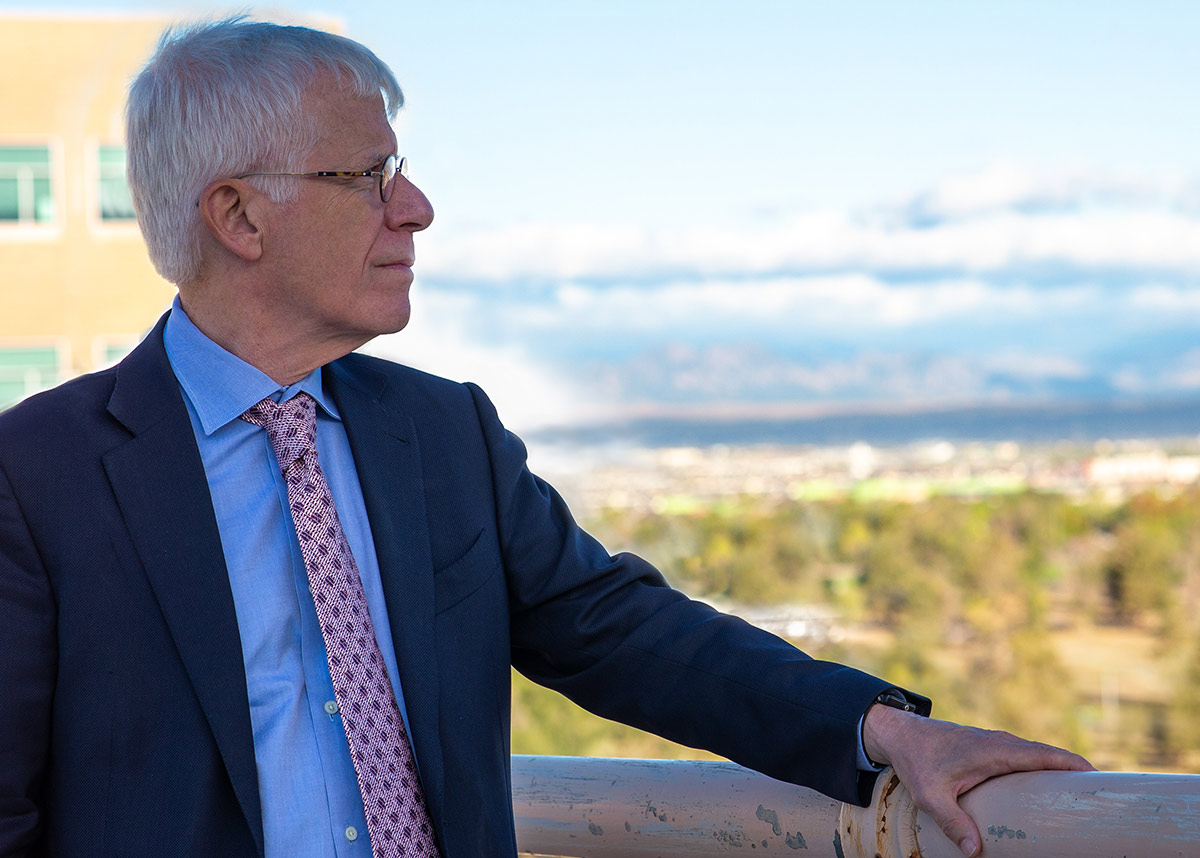COVID-19: The pandemic surges and so do mask mandates
Sep 13, 2021
The epidemic curve marking Colorado’s fifth wave continues to rise. An unfortunate milestone was reached last week when the number of Coloradans hospitalized with COVID-19 exceeded the peak in April 2020 (891 versus 888, respectively). Modeling predicts a continued rise that could bring the peak to well above 1,000 hospitalized COVID-19 patients over the next few weeks. Fortunately, we are unlikely to overwhelm hospital capacity, but news reports speak to stressed healthcare systems and healthcare workers in Colorado.
What will slow the pandemic’s rise in Colorado? Vaccination remains key but upping the prevalence of vaccination does not have immediate impact. Rather, full immunity is not achieved until about two months have elapsed since the first shot. For the shorter term, non-pharmaceutical interventions are needed, even if unpopular. With younger schoolchildren unvaccinated for now, mask mandates and careful testing and contact tracing in schools will help. Further control should result from assuring that schools are adequately ventilated with fresh air to dilute infectious aerosols. Mask mandates for indoor environments have a role as well, although they are being enacted in a patchy fashion across the state.
On Thursday last week, in a six-point plan, President Biden proposed a new set of mandates to slow the pandemic in the United States. In addition to increased vaccination, the plan includes further protection for the vaccinated through booster shots in the future, prevention strategies for schools, increasing testing and requiring masking, strategies to maintain economic growth, and improved care for those with COVID-19. The call for vaccination requirements reaches broadly and has the potential to make a difference.
Workers are a key target in the plan. The Occupational Safety and Health Administration (OSHA) has the mission of ensuring “safe and healthful working conditions for workers by setting and enforcing standards and by providing training, outreach, education and assistance.” Under that authority, OSHA will promulgate an Emergency Temporary Standard for workplaces with 100 or more employees that requires either vaccination or testing for the unvaccinated. OSHA has already issued an Emergency Temporary Standard to protect healthcare workers. The planned standard will greatly enhance vaccination rates, reaching to 80 million workers.
The vaccination mandates have created a firestorm of protests from Republican governors. The mandates have been cast as an infringement of individual rights, even though vaccination represents a critical measure to controlling the pandemic in the United States. Vaccination requirements are long-standing in these governors’ states. Mississippi has among the highest childhood vaccination rates, yet Governor Reeves joined the outcry against COVID-19 mandates. While these governors may find confrontation to be useful politically, their actions have adverse consequences for the residents in their states. Many are dying unnecessarily. How deadly would a pandemic need to be for them to support mandatory vaccination?
The private sector is piling on with vaccine mandates with major employers, e.g., United Airlines requiring vaccination for its employees. The list is long. The Los Angeles Unified School District will now require vaccination for students 12 years and older. The numbers of unvaccinated adults and teenagers will dwindle as more mandates are issued, following sound public health practice.
The somber 20th anniversary of the 9/11 terrorist attacks was on Saturday. Most adults will remember where they were as the Twin Towers and then the Pentagon were attacked, and Flight 93 crashed after a heroic takeover by its passengers. At the time, I was a faculty member at the Johns Hopkins Bloomberg School of Public Health participating in a retreat on environmental epidemiology in the school. The meeting ended when a phone message was delivered about the attacks. I spent much of that day watching the horrifying images from New York.
There were nearly 3,000 people killed on September 11, 2001. Today, the stories of those who lived and died remain compelling and tragic and describe resilience and loss. The toll continues as some of those who suffer from the long-term consequences of exposure at the Twin Towers have since died. The numerical analogy has been made: with COVID-19 at present, there is the equivalent number of deaths to 9/11 every two days. President Biden is doing the right thing in upping the stringency and urgency of the measures that we need to take to end the COVID-19 pandemic in the United States and the world.

Jonathan Samet, MD, MS
Dean, Colorado School of Public Health


